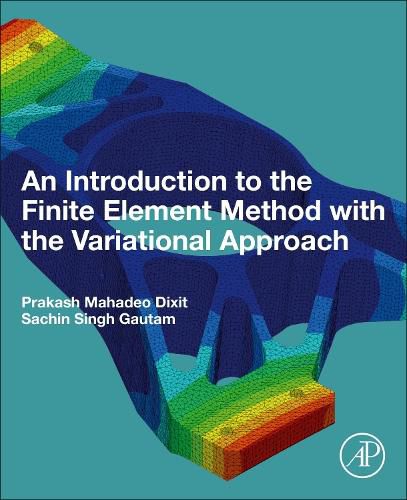Readings Newsletter
Become a Readings Member to make your shopping experience even easier.
Sign in or sign up for free!
You’re not far away from qualifying for FREE standard shipping within Australia
You’ve qualified for FREE standard shipping within Australia
The cart is loading…






An Introduction to the Finite Element Method with the Variational Approach offers a comprehensive solution to the gaps often found in introductory texts on the Finite Element Method (FEM). The book provides a thorough introduction to the fundamental principles of linear and time-independent FEM within the variational framework. It meticulously covers the derivation of 1-D FEM equations based on variational functionals, encompassing both linear and higher-order elements, and shape functions driven by convergence criteria. Furthermore, it explores 1-D numerical integration, outlines coding procedures, and provides insights into handling material nonlinearity and time-dependent scenarios.
Expanding into 2-D problems, the book offers derivations of 2-D FEM equations tailored to diverse engineering disciplines, including Steady-State Heat Conduction, Solid Mechanics (covering torsion, plane strain/axisymmetric cases, and the bending, stability, and vibrations of thin plates), as well as Fluid Mechanics (addressing incompressible inviscid and viscous fluids). It includes detailed discussions on element continuity, numerical integration techniques, and even includes 2-D codes for selected problems. The book concludes by delving into recent advancements in FEM, with a specific focus on applications in machine learning and isogeometric analysis.
$9.00 standard shipping within Australia
FREE standard shipping within Australia for orders over $100.00
Express & International shipping calculated at checkout
An Introduction to the Finite Element Method with the Variational Approach offers a comprehensive solution to the gaps often found in introductory texts on the Finite Element Method (FEM). The book provides a thorough introduction to the fundamental principles of linear and time-independent FEM within the variational framework. It meticulously covers the derivation of 1-D FEM equations based on variational functionals, encompassing both linear and higher-order elements, and shape functions driven by convergence criteria. Furthermore, it explores 1-D numerical integration, outlines coding procedures, and provides insights into handling material nonlinearity and time-dependent scenarios.
Expanding into 2-D problems, the book offers derivations of 2-D FEM equations tailored to diverse engineering disciplines, including Steady-State Heat Conduction, Solid Mechanics (covering torsion, plane strain/axisymmetric cases, and the bending, stability, and vibrations of thin plates), as well as Fluid Mechanics (addressing incompressible inviscid and viscous fluids). It includes detailed discussions on element continuity, numerical integration techniques, and even includes 2-D codes for selected problems. The book concludes by delving into recent advancements in FEM, with a specific focus on applications in machine learning and isogeometric analysis.